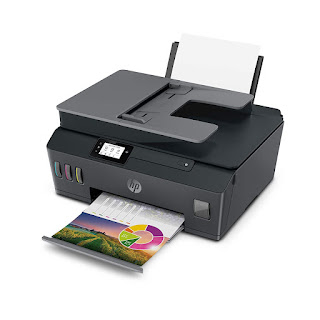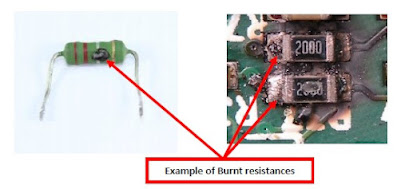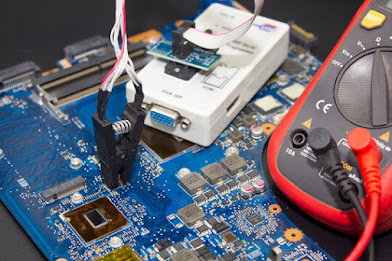INTRODUCTION TO COMPUTER HARDWARE AND SOFTWARE
Chapter 1: Introduction to Computer Hardware and Software
1.1 What is a Computer?
- Definition and purpose of a computer
- Components of a computer system: hardware and software
1.2 Understanding Computer Hardware
- Explanation of hardware components: CPU, RAM, storage devices, input/output devices
- Role of each component in computer operation
1.3 Exploring Computer Software
- Definition and types of software: system software vs. application software
- Importance of software in computer functionality
Chapter 2: Computer Hardware Fundamentals
2.1 Central Processing Unit (CPU)
- Role of CPU in processing data
- CPU architecture: cores, clock speed, cache
- How CPU influences computer performance
2.2 Memory (RAM)
- Importance of RAM in computer operation
- How RAM stores and retrieves data
- RAM's impact on multitasking and overall speed
2.3 Storage Devices
- Different types of storage: HDD, SSD, flash drives
- How data is stored and retrieved from storage devices
- Choosing the right storage for different purposes
Chapter 3: Computer Software Basics
3.1 System Software
- Definition and examples of system software (operating systems, drivers)
- Role of an operating system in managing hardware and software resources
3.2 Application Software
- Definition and examples of application software (word processors, browsers, games)
- How application software enhances user productivity and entertainment
3.3 Installing and Uninstalling Software
- Steps to install new software
- Proper uninstallation process to avoid system issues
Chapter 4: Operating Systems and User Interfaces
4.1 Introduction to Operating Systems
- Functions of an operating system
- Popular operating systems: Windows, macOS, Linux
4.2 User Interfaces (UI)
- Types of user interfaces: command-line vs. graphical user interface (GUI)
- Navigating and interacting with GUI elements
4.3 Customizing Your Operating System
- Personalizing desktop settings
- Installing and managing software through the operating system
Chapter 5: Troubleshooting and Maintenance
5.1 Common Hardware Issues
- Identifying hardware problems: overheating, hardware failures
- Troubleshooting steps and preventive measures
5.2 Software-related Problems
- Dealing with software crashes and errors
- Running system diagnostics and software updates
5.3 Regular Maintenance and Security
- Importance of keeping software updated
- Installing antivirus software
and practicing safe browsing
Chapter 1: Introduction to Computer Hardware and Software
1.1 What is a Computer?
A computer is a sophisticated electronic device designed to process, store, and retrieve information. It performs a wide range of tasks, from basic calculations to complex simulations, and has become an integral part of modern life. Computers come in various forms, including desktops, laptops, tablets, smartphones, and even specialized devices like servers and embedded systems.
1.2 Understanding Computer Hardware
Computer hardware refers to the physical components that make up a computer system. These components work together to execute commands and perform tasks.
Central Processing Unit (CPU): Often referred to as the "brain" of the computer, the CPU executes instructions and performs calculations. It interprets and carries out the tasks specified by software.
Memory (RAM): Random Access Memory stores data that the CPU is actively using. It provides quick access to information, enabling efficient multitasking and data manipulation.
Storage Devices: These devices store data in a more permanent manner than RAM. Hard Disk Drives (HDDs) and Solid State Drives (SSDs) are common storage devices used to store files, programs, and the operating system.
Input/Output Devices: These devices allow users to interact with the computer. Examples include keyboards, mice, monitors, printers, and speakers.
1.3 Exploring Computer Software
Computer software encompasses all the programs, applications, and data that instruct the hardware on what tasks to perform. Without software, hardware would be inert and unable to carry out any meaningful operations.
Software can be broadly classified into two categories:
System Software: This software manages and controls the hardware components of the computer. The Operating System (OS) is a critical part of system software, as it provides an interface between users and the hardware.
Application Software: Application software includes programs that users interact with to accomplish specific tasks. Examples include word processors, web browsers, games, and image editors.
In essence, a computer combines hardware and software to process data, run applications, and provide a platform for communication and information exchange.
Chapter 1 Summary: A computer is an electronic device that processes, stores, and retrieves information. It consists of hardware components like the CPU, RAM, storage devices, and input/output devices. Software, including system software and application software, provides instructions to the hardware, enabling it to perform tasks and interact with users. Computers are used for a wide range of activities, from basic calculations to advanced simulations, making them essential tools in modern society.
Chapter 2: Computer Hardware Fundamentals
2.1 Central Processing Unit (CPU)
The Central Processing Unit (CPU) is the heart of the computer, responsible for executing instructions and performing calculations. It acts as the command center, coordinating the activities of all the other hardware components.
CPU Architecture:
- Cores: Modern CPUs often have multiple cores, which function as separate processing units. This enables the CPU to handle multiple tasks simultaneously, improving overall performance.
- Clock Speed: Clock speed, measured in gigahertz (GHz), determines how many instructions the CPU can execute per second. A higher clock speed generally results in faster processing.
- Cache: The CPU's cache is a small, high-speed memory that stores frequently used data. It helps reduce the time the CPU spends waiting for data from the main memory.
CPU's Role: The CPU fetches instructions from memory, decodes them, executes the required operations, and then stores the results. This process occurs billions of times per second, enabling the computer to perform a wide range of tasks.
2.2 Memory (RAM)
Random Access Memory (RAM) is a volatile memory that provides quick access to data the CPU is actively using. It allows for efficient multitasking by holding instructions and data needed by running applications.
Importance of RAM:
- Running multiple applications simultaneously: RAM allows you to switch between programs smoothly.
- Loading and storing data: RAM stores data temporarily, speeding up access compared to storage devices.
- Enhancing performance: Sufficient RAM prevents slowdowns and improves overall system responsiveness.
2.3 Storage Devices
Storage devices store data in a more permanent manner than RAM. They retain data even when the computer is turned off.
Types of Storage:
- Hard Disk Drives (HDDs): Traditional mechanical drives with spinning platters. They offer larger capacities at a lower cost but are slower compared to SSDs.
- Solid State Drives (SSDs): SSDs use flash memory and have no moving parts. They are faster, more durable, and consume less power than HDDs.
Data Storage and Retrieval: When you save a file, it is stored on a storage device. When you open the file, it's retrieved from storage into RAM for the CPU to work on.
Choosing the Right Storage: Consider factors like speed, capacity, and budget when selecting storage devices. SSDs are recommended for faster performance, while HDDs offer more storage at a lower cost.
Chapter 2 Summary: The CPU is the computer's "brain," executing instructions and performing calculations. It has multiple cores, clock speed, and cache to enhance its processing capabilities. RAM provides quick access to data for active tasks, enabling efficient multitasking and enhancing performance. Storage devices like HDDs and SSDs store data more permanently, with SSDs offering faster speeds and greater durability. Choosing the right storage depends on factors such as speed, capacity, and budget. Together, these hardware components work in harmony to enable the computer to perform tasks efficiently and effectively.
Chapter 3: Computer Software Basics
3.1 System Software
System software serves as the backbone of the computer, managing and controlling hardware resources and providing an interface for user interaction.
Operating System (OS):
- The OS is a crucial part of system software, acting as an intermediary between users and hardware.
- It manages hardware resources, provides a user interface, and enables the execution of software programs.
- Examples of popular operating systems include Microsoft Windows, macOS, and various Linux distributions.
Device Drivers:
- Device drivers are software components that allow the operating system to communicate with hardware devices.
- They ensure proper functioning and compatibility of devices such as printers, graphics cards, and network adapters.
3.2 Application Software
Application software includes programs and applications that users interact with to perform specific tasks.
Types of Application Software:
- Word Processing Software: Used for creating and editing documents. Examples include Microsoft Word and Google Docs.
- Web Browsers: Allow users to access and navigate the internet. Examples include Google Chrome, Mozilla Firefox, and Microsoft Edge.
- Multimedia Software: Used for creating, editing, and playing media content, such as Adobe Photoshop, VLC media player, and iTunes.
- Gaming Software: Provides entertainment through video games, ranging from casual games to complex simulations.
- Productivity Software: Helps users manage tasks, schedules, and projects, such as Microsoft Excel and Trello.
3.3 Installing and Uninstalling Software
Installing Software:
- Download or insert the installation media (CD, DVD, or digital download).
- Follow on-screen prompts to select installation options and customize settings.
- Once installed, the software becomes accessible through the operating system's interface.
Uninstalling Software:
- Access the operating system's control panel or settings to uninstall software.
- Follow the prompts to remove the software, which may involve deleting program files and related data.
Chapter 3 Summary: System software, including the operating system and device drivers, manages hardware resources and provides a user interface. Application software encompasses various programs used to perform specific tasks, such as word processing, web browsing, multimedia editing, and gaming. Installing software involves downloading or inserting installation media and following on-screen prompts. Uninstalling software is done through the operating system's control panel or settings. These software components enhance the computer's functionality and allow users to accomplish a wide range of tasks, from productivity to entertainment.
Chapter 4: Operating Systems and User Interfaces
4.1 Introduction to Operating Systems
An operating system (OS) is a crucial software component that manages hardware resources, provides a user-friendly interface, and enables the execution of software applications.
Functions of an Operating System:
- Hardware Management: The OS controls and allocates hardware resources such as CPU, memory, and storage.
- File Management: It organizes and manages files and directories, enabling users to store and retrieve data.
- User Interface: The OS provides a graphical or command-line interface for users to interact with the computer.
- Security and Access Control: It ensures the security of data and resources by implementing user authentication and permissions.
Popular Operating Systems:
- Microsoft Windows: Widely used for personal and business computing, offering a range of versions tailored to different needs.
- macOS: Exclusive to Apple's Mac computers, known for its sleek design and seamless integration with Apple devices.
- Linux: An open-source OS with various distributions (distros) catering to different user preferences and technical expertise.
4.2 User Interfaces (UI)
User interfaces allow users to interact with the computer and its software. There are two main types of user interfaces: command-line and graphical user interface (GUI).
Command-Line Interface (CLI):
- Users interact with the computer by entering text commands.
- Efficient for advanced users and system administrators who require precise control.
- Common CLI environments include Windows Command Prompt and Unix/Linux terminal.
Graphical User Interface (GUI):
- GUIs provide a visual interface with icons, windows, and menus, making computing more user-friendly.
- Users interact with elements using a mouse, touchpad, or touchscreen.
- Windows, macOS, and most Linux distributions feature GUIs.
4.3 Customizing Your Operating System
Customizing your operating system allows you to personalize its appearance and functionality.
Personalizing Desktop Settings:
- Change wallpapers, themes, and screen savers to suit your preferences.
- Rearrange icons and widgets for easy access to frequently used applications.
Installing and Managing Software:
- Use software repositories or app stores to install new applications.
- Keep your software updated to ensure security and access to new features.
Chapter 4 Summary: An operating system manages hardware resources, provides user interfaces, and enables software execution. It performs functions such as hardware management, file organization, user authentication, and access control. Popular operating systems include Microsoft Windows, macOS, and various Linux distributions. User interfaces come in two main types: CLI, which uses text commands, and GUI, which offers a visual, user-friendly experience. Customizing your OS involves personalizing desktop settings and efficiently installing and managing software. A well-designed OS and user interface enhance the user's overall computing experience and productivity.
Chapter 5: Troubleshooting and Maintenance
5.1 Common Hardware Issues
Understanding and addressing common hardware issues is essential for maintaining a smoothly functioning computer system.
Identifying Hardware Problems:
- Overheating: Computers may overheat due to dust accumulation or inadequate cooling. This can lead to performance issues or even hardware damage.
- Hardware Failures: Components like hard drives, RAM, or graphics cards can fail over time, causing crashes or data loss.
Troubleshooting Steps:
- Check for dust and clean internal components regularly.
- Monitor temperatures using software tools and ensure proper airflow.
- Run hardware diagnostics to identify failing components.
Preventive Measures:
- Keep the computer in a clean and well-ventilated environment.
- Handle hardware components with care during upgrades or maintenance.
5.2 Software-related Problems
Software-related issues can impact the computer's stability and performance. Understanding how to deal with them is crucial.
Software Crashes and Errors:
- Applications may crash or produce errors due to bugs, conflicts, or insufficient system resources.
Troubleshooting Steps:
- Update software and drivers to the latest versions.
- Scan for malware and viruses that could be causing instability.
- Check for conflicting software or recent installations.
Running System Diagnostics:
- Use built-in system diagnostic tools to identify and resolve software issues.
5.3 Regular Maintenance and Security
Performing regular maintenance and ensuring security measures are in place helps keep the computer system running smoothly and protected.
Keeping Software Updated:
- Regularly update the operating system, drivers, and applications to access new features and security patches.
Installing Antivirus Software:
- Install reputable antivirus software to protect against malware, viruses, and other online threats.
Practicing Safe Browsing:
- Be cautious when downloading files or clicking on links from untrusted sources to avoid malware infection.
Chapter 5 Summary: Troubleshooting and maintenance are vital for ensuring the longevity and optimal performance of your computer system.
Hardware Issues: Regular cleaning and monitoring for overheating help prevent hardware problems. Identifying failing components early and taking preventive measures can extend the life of your hardware.
Software Issues: Address software crashes and errors by updating software, scanning for malware, and checking for conflicts. Running system diagnostics can help identify and resolve underlying issues.
Regular Maintenance: Keeping your software updated, installing antivirus software, and practicing safe browsing habits contribute to a secure and efficient computing experience.
By mastering troubleshooting and maintenance techniques, you'll be better equipped to address potential problems and enjoy a reliable and smoothly functioning computer system.







Comments
Post a Comment